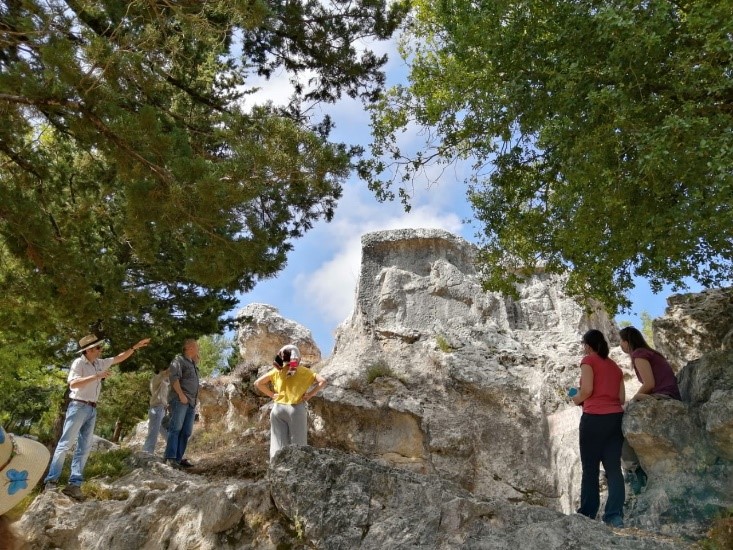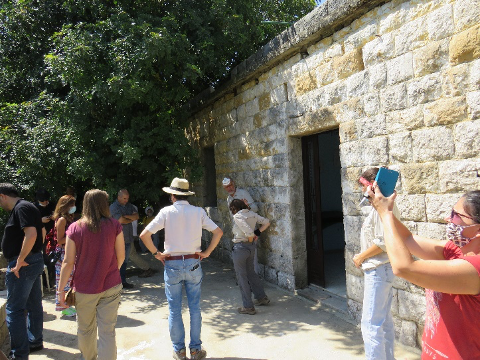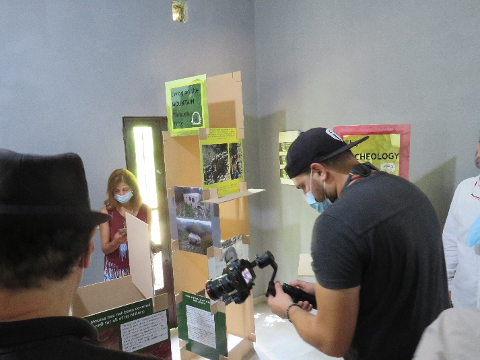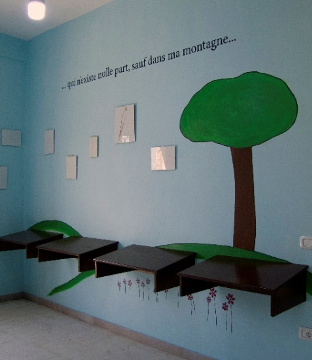[CROSSDEV] جولة الغموض السحرية - تجربة طريق أدونيس في لبنان
The content is available only in English
On Friday, 10th of July, CROSSDEV Lebanese partner APJM (Association for the Protection of Jabal Moussa) invited experts and partners on a Magical Mystery Tour to explore less-known heritage sites in the legendary Adonis Valley and Jabal Moussa Biosphere Reserve, protected by the General Directorate of Antiquities (DGA).
The get-together was an opportunity to bring together people from different backgrounds and institutions, to contribute to the institution of the “Adonis Tour”, under development with the support of CROSSDEV Project.
Watch a video of the tour and get in the mood!
The tour started in the town of Mchati, where the first High Mountain Phoenician center is to be established. While today an unfinished building, the group went on a “virtual” tour in the center, where the Adonis myth and the link with the Rotta dei Fenici will be described, and a central kitchen will be established, where local women can meet and produce local “mouneh” (preserved agro-food), to be suggested to visitors.
Stephen McPhillips, Landscape archaeologist, explaining about
the recent discoveries and findings at Qornet el Deir site
Nazih, a local guard, proudly greeted the visitors in a local shop, and offered the visitors mulberry juice and cake, made by his wife. He was hoping this tour would attract more visitors to his town, and to their guesthouse.
The bus then headed off to the town of Ghineh, on a beautiful winding road, offering a full view on Jabal Moussa from its western verdoyant side, and the steep cliffs of the Valley of Adonis on its northern side.
View on Jabal Moussa Biosphere Reserve from the bus
The first stop was in Ghineh, where Wissam Khalil guided the group through the site. Perhaps the most stunning piece of the site was a floor decorated with a mosaic, unfortunately not well preserved. The mosaic is part of a Byzantine church, built on the remains of a Roman temple, but the surrounding walls are ruins of a more ancient settlement.
The next stop was an imposing bas-relief on a high rock, the “Adonis rock”, portraying two scenes: a hunter (or Adonis) fighting a wild animal, and a weeping woman.

Adonis rock in Ghineh
In the town of Yahchouch, the group visited Jabal Moussa’s plant nurseries, where wild, native plants are grown from seeds collected from the Biosphere Reserve. On the terrace of a newly restored house, under an old carob tree, a break awaited: traditional manakich (dough with wild herbs) provided from a local bakery.
Inside the house, visitors went through two exhibits: “The Budding Botanist”, a work in progress botanical exhibit, in collaboration with the Critical Ecosystem Partnership Fund, and “Life on the mountain”, a cultural exhibit in collaboration with the Swedish Institute.



Break under the carob tree, “Life on the mountain” exhibit and “The Budding Botanist” center - drawings by Beatrice Doumet, inspired by “Le Petit Prince”
Crossing over Adonis river through an old bridge, the bus stops in front of the archeological site in the town of Machnaqa. Mashnaka isn’t only a historical archeological destination, but also a natural destination, offering a view on Jabal Moussa from the other side of Adonis river.
Led by Wissam Khalil, the group entered the sacred precint, surrounding an altar in the form of a tower. The size of the temple was unexpectedly large, compared to the small town. Historically, it must have welcomed many visitors, probably pilgrims on their way to Afqa. Today, the magnificent site is barely known, rarely visited.
A brief walk led to several rock tombs and three “bas-reliefs”, very similar to the “Adonis rock” in Ghineh.
Jabal Moussa seen from Machnaqa and the altar in Machnaqa
About half way between Machnaqa and Afqa grotto, the bus stopped at the archaeological site of “Yanouh”. Today known as the church of “Mar Gergis el Azraq” (Saint George the blue), due to the bluish limestone of the central temple. The site hosts several worship sites from many periods: Roman temple, hellenistic building, medieval church, Byzantine basilica.
Group photo in front of “Saint George the Blue”
On the way to Afqa, the link with the myth of Adonis and Astarte was explained: the river would turn red every year, signaling to the people of Byblos the death of their god Adonis, and the start of the pilgrimage that would go through Machnaqa, Yanouh, before arriving to the source of the river in Afqa, where a temple is dedicated to Aphrodite (Astarte), today collapsed.
Afqa ruins, described by Ernest Renan as
“the most beautiful site in the world” in his book “Mission de Phénicie”
Back in the town of Mchati, the group enjoyed a traditional Lebanese lunch, at Hoda’s guesthouse, and discussed the importance of reviving the myth of Adonis and Astarte, through the “Adonis Route”.
Mezza and Arak at Hoda’s guesthouse in the town of Mchati
For information or inquiries:
Association for the Protection of Jabal Moussa (APJM)
info@jabalmoussa.org
---
Other useful links
Rotta dei Fenici: https://fenici.net/en/
Lebanese Ministry of Culture: http://culture.gov.lb/ar/Home
Lebanese Ministry of Tourism: http://mot.gov.lb/
This article was approved and scheduled before the disaster occurred in Lebanon on August 4, 2020. The project partners communicated solidarity and support to the Lebanese partners and Lebanon, and the article was published on time, as a message of hope, revival and positivity, during these difficult dark times. After the fire, the Phoenix is today shaking off its ashes, waiting to rise up again.
Keep in touch with CROSSDEV: follow us on Twitter and Instagram!
#GoCROSSDEV







